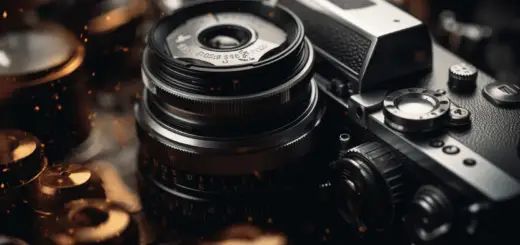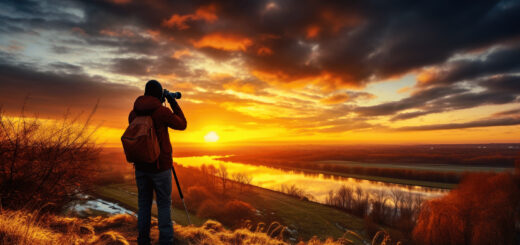Mastering the Art of Aerial Shots: A Guide to Drone Photography
Drone photography has rapidly gained popularity over the past few years, allowing photographers to capture stunning aerial shots that were once only possible with the use of helicopters or airplanes. Mastering the art of aerial shots with drones can open up new creative opportunities and let you capture a unique perspective of the world around you. This comprehensive guide will provide all the necessary information you need to excel in drone photography, from choosing the right equipment to understanding essential techniques and polishing your editing skills.
Table of Contents
- Choosing the Right Drone for Photography
- Understanding Drone Laws and Regulations
- Basic Drone Flying Techniques
- Aerial Photography Tips and Techniques
- Drone Photography Composition Tips
- Post-processing Drone Photos
- Practicing Drone Photography Etiquette
Choosing the Right Drone for Photography
With numerous options available in the market today, selecting the perfect drone for your photography needs can be overwhelming. When making a choice, consider the following factors:
- Camera Resolution: A high-resolution camera is essential for capturing quality aerial shots. Look for drones equipped with at least a 12MP sensor for still images and capability to record 4K video.
- Gimbal Stabilization: A gimbal serves as a stabilization system for the drone’s camera, ensuring sharp and steady shots. A 3-axis gimbal is highly recommended for professional results.
- Battery Life: Drones with longer battery life allow you more time to explore and capture the perfect shot. Aim for a drone with a minimum of 20 minutes of flight time.
- Flight Performance: Advanced GPS systems, obstacle detection, and intelligent flight modes can enhance your overall experience and help you achieve better shots.
- Price: The cost of drones can vary significantly. Set a budget and prioritize your requirements before making a purchase.
Understanding Drone Laws and Regulations
Drone regulations are established to ensure the safe and responsible usage of drones in public spaces, and they may vary from country to country. Before you start capturing aerial shots, familiarize yourself with relevant laws and regulations in your region. Some common rules include:
- Registering your drone with the appropriate authority
- Obtaining necessary permits or licenses for drone operations
- Restrictions on drone flight near airports and other restricted zones
- Flight height limitations and rules on maintaining visual line-of-sight during operation
- Restrictions on flying over people or private properties without consent
Basic Drone Flying Techniques
Before diving into aerial photography, it’s essential to develop your drone piloting skills. Practice the following flying techniques to improve your control and confidence:
Takeoff and Landing
Both takeoff and landing can be critical moments during a drone flight. Practice these techniques frequently to minimize risks and ensure a smooth process.
Hovering
Developing the ability to maintain a steady hover with your drone helps in capturing sharp images and videos. Practice hovering at various heights and orientations.
Basic Maneuvers
Mastering basic drone maneuvers such as flying forwards, backwards, upward, downward, and turning will allow you to focus more on capturing the perfect shot when piloting.
Flying in Different Conditions
Practice flying your drone in various weather conditions to understand how wind, temperature, and light levels affect its performance and the quality of your aerial shots.
Aerial Photography Tips and Techniques
Once you’re comfortable with basic drone flying techniques, refining your aerial photography skills can significantly elevate the quality of your shots. Here are some tips:
Plan Your Shots
Scout your shooting location and plan your desired shots in advance. Consider factors such as light direction and composition when preparing your shots.
Use Intelligent Flight Modes
Utilize your drone’s intelligent flight modes, such as waypoint navigation and orbit, to achieve smooth and consistent movements for better aerial shots.
Adjust Camera Settings
Familiarize yourself with your drone’s camera settings and learn to make adjustments for optimal image quality, ensuring correct exposure and focus.
Explore Unique Perspectives
One of the most significant advantages of drone photography is capturing unique perspectives. Experiment with different angles, heights, and viewpoints to create distinctive images.
Master the Art of Panoramas
Learn to capture panoramic images by taking multiple overlapping shots and later stitching them together for breathtaking panoramic aerial landscapes.
Drone Photography Composition Tips
Applying the principles of composition to your drone photography can dramatically enhance your images. Consider the following tips for more visually appealing aerial shots:
- Use Leading Lines: Leading lines guide the viewer’s eye through a photo, creating visual interest. Incorporate natural and man-made lines such as roads or rivers in your compositions.
- Play with Patterns and Textures: Aerial shots are ideal for highlighting patterns and textures in the landscape. Look for interesting repetitions and contrasts to enhance your images.
- Rule of Thirds: By placing your subject or points of interest along the grid lines created when dividing an image into nine equal parts, you can create balance and intrigue in your compositions.
- Frame Within a Frame: Using elements in your surroundings to frame your subject adds depth and context to your images.
- Experiment with Negative Space: Emphasizing empty or negative space in your compositions can create a sense of simplicity, highlighting your subject and evoking a mood in your aerial images.
Post-processing Drone Photos
Post-processing is an essential step for bringing out the best in your drone photography. Enhance your aerial shots with these tips:
- Adjust exposure, shadows, highlights, and contrast for balanced lighting
- Improve color saturation and vibrance for more vibrant images
- Perform image sharpening and noise reduction techniques for clearer shots
- Utilize lens correction tools to fix distortion caused by wide-angle lenses
- Use photo stitching software for seamless panoramic images
Practicing Drone Photography Etiquette
As a drone photographer, it’s crucial to be courteous and respectful towards others. Keep the following etiquette tips in mind:
- Stay informed about and follow drone laws and regulations in your area
- Respect the privacy of individuals and private properties
- Avoid flying in populated areas or over large groups of people
- Minimize noise disturbance by keeping a suitable distance from residential areas
- Collaborate and share knowledge with fellow drone photographers
Mastering the art of aerial shots in drone photography takes dedication, practice, and patience. By following this guide and continually honing your skills, you will ultimately capture stunning, unique images that showcase the beauty of the world from above.



